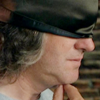Post by beckstar on Apr 27, 2009 14:26:12 GMT
ALL BAR NONE
James May on why real British beer is still in trouble
Ever since the invasion of Britain by lager, which I believe came over with some 1970s cartoon Vikings, proper beer has been under threat in our land.
Let’s just be clear what I mean by lager. In Germany or the Czech Republic it can be a bottom-fermented craft brew, exhibiting flavour, character and even that thing Oz Clarke is always banging on about – a sense of place. But here it means a yellow peril manufactured in a giant keg erected in a field in an area that wasn’t even good enough for John Prescott’s housing schemes, and marketed as the expensive taste of rustic pre-war France.
This stuff has nothing to do with the pleasures of the grain. It can’t, because it tastes of nowt. It’s cold, fizzy and designed purely to get people pissed, which is a despicable ambition in a beer. Real beer is a glorious sensory experience that just happens to get you lit up as a happy side effect. Lager encouraged people to knock policeman’s helmets off, proper beer helps shy people to have sexual intercourse.
I, therefore, like proper beer, and it’s probably my desert island drink. But I still think it’s in trouble. Yes, microbreweries are on the increase, sales of bitter are rising again, blah blah blah. The issue, however, is a sociological one.
Following my experiences of the last few years, I now also like a decent bottle of wine. But, just as beer and wine don’t mix well of an evening, neither do they mix in what councillors call ‘the community’. Beer is still locked in a world of Victorian pubs with brown walls, an as long as it is, it will be associated with beards, bellies and bar towels. To be honest, I’d rather drink in a funky, modern bar. But just as decent wine struggles to make an impression in the local, so does real beer from handpumps remain painfully absent from the whitewashed environs of wine-bar-style establishments. If beer is available, it’s a keg lager. It’s as if a social divide akin to that which used to exist between the tap room and lounge has been extended to the world at large.
I think this is the greatest contribution the real ale movement could make to the resurrection of beer – campaign to make it available in the chromed bars of contemporary hotels or fashionable restaurants. Unless this happens, I fear the Skol Vikings will be victorious.
And that, as Philip Larkin said, will be England gone.
Beer – the official magazine of CAMRA Summer 2009
James May on why real British beer is still in trouble
Ever since the invasion of Britain by lager, which I believe came over with some 1970s cartoon Vikings, proper beer has been under threat in our land.
Let’s just be clear what I mean by lager. In Germany or the Czech Republic it can be a bottom-fermented craft brew, exhibiting flavour, character and even that thing Oz Clarke is always banging on about – a sense of place. But here it means a yellow peril manufactured in a giant keg erected in a field in an area that wasn’t even good enough for John Prescott’s housing schemes, and marketed as the expensive taste of rustic pre-war France.
This stuff has nothing to do with the pleasures of the grain. It can’t, because it tastes of nowt. It’s cold, fizzy and designed purely to get people pissed, which is a despicable ambition in a beer. Real beer is a glorious sensory experience that just happens to get you lit up as a happy side effect. Lager encouraged people to knock policeman’s helmets off, proper beer helps shy people to have sexual intercourse.
I, therefore, like proper beer, and it’s probably my desert island drink. But I still think it’s in trouble. Yes, microbreweries are on the increase, sales of bitter are rising again, blah blah blah. The issue, however, is a sociological one.
Following my experiences of the last few years, I now also like a decent bottle of wine. But, just as beer and wine don’t mix well of an evening, neither do they mix in what councillors call ‘the community’. Beer is still locked in a world of Victorian pubs with brown walls, an as long as it is, it will be associated with beards, bellies and bar towels. To be honest, I’d rather drink in a funky, modern bar. But just as decent wine struggles to make an impression in the local, so does real beer from handpumps remain painfully absent from the whitewashed environs of wine-bar-style establishments. If beer is available, it’s a keg lager. It’s as if a social divide akin to that which used to exist between the tap room and lounge has been extended to the world at large.
I think this is the greatest contribution the real ale movement could make to the resurrection of beer – campaign to make it available in the chromed bars of contemporary hotels or fashionable restaurants. Unless this happens, I fear the Skol Vikings will be victorious.
And that, as Philip Larkin said, will be England gone.
Beer – the official magazine of CAMRA Summer 2009










 It's not that bad living there ya know!
It's not that bad living there ya know! 
 ....not in the same league as James but wouldn't say no hehe!!!!
....not in the same league as James but wouldn't say no hehe!!!!


